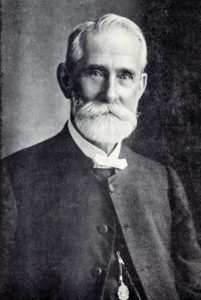This round of Covid-19 has got me thinking about how things were when it began. When we speculated – wrongly – that the virus was easily transmissible from surfaces, that the early strain was extremely contagious and that it might take years to find a vaccine. Back then all the talk was of “flattening the curve”, which meant we assumed most of us were going to be exposed to the virus but we hoped that by being careful we could keep the numbers of infected people from skyrocketing all at once. Our goal was to stop our hospitals – and our intensive care units in particular – from being overwhelmed. We knew that the fatality rate from the virus wasn’t massive, but we also knew that in big populations even small percentages add up to big numbers and we had to think first and foremost about our fragile, underfunded health system. Because if the hospitals get overwhelmed people who could have been saved will die, and not just from Covid. A swamped hospital can’t treat anybody properly.
Staying at home, wearing masks (although that obvious measure was absurdly debated for far too long) and “social distancing” were ways of trying to slow the virus’s apparently inevitable spread. The worst of our fears were unfounded, as far as the early strains of the virus were concerned. But much of the thinking we employed in those days now finds new currency with the extremely contagious delta strain. We are luckier now, though, in one respect: now at least we have some vaccines – even though our sloppy government has managed to drop the ball on that one vital task we trusted it to perform and we have far too few doses of vaccine available when we really need them. So, in the absence of enough vaccines, we are back to flattening the curve. It’s a race, for sure, to keep the spread as low as we can until we can get more doses of vaccines.
Can’t see past their noses
All this, and the mad arguments of the crazies who can’t see far enough past their noses to understand why we have to flatten that curve, reminded me of an old pamphlet I have in my collection about vaccination in the days when smallpox was still a real and present danger. The 1901 brochure, The History and Effects of Vaccination, is an excerpt from The Edinburgh Review of April 1899 and was distributed by the then Premier of NSW, John See. See was clearly troubled by a rising movement of anti-vaxxers whom he feared had never known the ravages of smallpox and were risking letting it back into the community. Before the advent of vaccination, the article stated, smallpox had “attacked almost everyone exposed to the infection; it killed at least one in seven of those attacked – in many epidemics as many as one in three. It was an illness of the gravest suffering. When it did not kill it left many of its victims blinded, and the large majority of them terribly disfigured”.
Smallpox was regarded as an almost inescapable disease of childhood. If you survived it, you were generally protected against it for the rest of your life. If you didn’t get it in childhood, you lived in fear of it forever. When people advertised for employees only people who had suffered smallpox were welcome to apply. People who had not yet had it were a liability. Not being “pock-marked” was a distinction.

For centuries the Chinese had practiced inoculation – deliberately infecting themselves with small amounts of pus from smallpox sufferers. Lady Mary Wortley Montagu introduced the idea to England in the early 1700s, but it didn’t really catch on until the 1740s. There was a slim chance that inoculation might give you a fatal dose of the disease instead of the hoped-for mild version, and in any case you were infectious during the inoculation period.

In 1774 an English farmer, Benjamin Jesty – having noted that people who had contracted the mild disease of cowpox from diseased cattle were immune against the deadly smallpox – decided to vaccinate his wife and two sons with cowpox. Jesty himself had contracted cowpox in his youth, and had never caught smallpox even though he had often been around people who had it. It had also been widely noted, anecdotally, that the smallpox inoculators were unable to produce an infection in people who had previously had cowpox. In 1805, when he was 70, Jesty was invited to London by the “Original Vaccine Pock Institution” to describe his experiences and to submit himself to attempts at both inoculation and vaccination. The physicians could not produce either smallpox or cowpox infections in Jesty, providing more evidence that cowpox protected against smallpox. This was welcome additional evidence at a time when the debate over vaccination was fairly furious. (My source for this is my copy of The Edinburgh Medical and Surgical Journal of 1805).
The much-feted Edward Jenner twigged to the key to vaccination in the year 1769 when he was just 21, but he did nothing with the idea until 1796. It had been reasonably well-recognised that people who’d had the mild, related disease of cowpox (caught from cows) couldn’t be inoculated with smallpox. Jenner figured this could prove to be a huge boon to humanity, but was scared to be ridiculed so waited decades to test his theory that deliberately induced cowpox would protect against smallpox. When he did put it to the test, the theory was immediately proven.
Jenner published a paper after two years of successful experiments, and was immediately hammered by critics, especially religious ones who insisted that vaccination was the work of the devil. But despite this pulpit propaganda, most people feared smallpox more than they feared the devil, and voted with their feet, queuing for the opportunity to escape the terrible shadow of the pox. The Spanish Government was so excited at the prospect of stamping out smallpox that it sent ships to its overseas possessions with doctors and young children on board. The idea was to vaccinate a couple of children every week or two to ensure a fresh supply of cowpox pus when they finally reached their destinations. The recipients in the colonies were deeply grateful.

Only the wilfully blind could possibly argue that vaccination was not incredibly effective. It dramatically cut the number of infections and even more dramatically cut the fatality rate in infected people. And yet, once the threat of smallpox had somewhat receded, some of those people who had never seen it up close began to doubt it had ever been so bad, and began to speak against vaccines. The brochure concludes:
Wilfully blind
The evidence in support of the protective influence of vaccination being, as we have shown, so overpoweringly strong, the question arises: How can any one refuse to accept it? What is the secret of the resistance to vaccination? In trying to answer these questions, the first point to notice is that the proportion of people practically acquainted with small pox who do not accept the evidence as to the value of vaccination is so small as to be in effect non-existent. Has anyone ever heard of an anti-vaccinist who had held a post on the staff of a smallpox hospital, or in any other position where he would have practical experience of smallpox? Have any of them seen the disease in China or in Africa as Surgeon Thomas Parke saw it in the Stanley expedition? Have they not seen it only with the eyes of their minds in the safe seclusion of the British Museum Reading-room, or of their own studies? Would they might instead direct their imaginations to the saddened homes and maimed or ruined lives for which their evil teaching makes them responsible! As apostles of mischief and misery they have much to answer for.
In the second line of the party stands the large and impenetrable body of cranks – i.e., of people without any sense of intellectual proportion. They see everything of the same size and of the same value. Behind them there is the great body of uneducated people who are against vaccination because it gives them a little trouble – some restless nights – and because they think the risk of smallpox is a remote one. They have seen or heard of cases in which vaccination has done harm. It is easy to sympathise with this group of objectors. In many families the mother, as well as the father, is toiling all day in a factory, and the loss of a few nights’ rest is not a trifling added burden to both of them. They have not learnt enough history, logic, or arithmetic to enable them to follow the arguments in support of vaccination. Smallpox seems a long way off, and the risks and worries of vaccination very near. They are only too ready to welcome the mischievous doctrines of the anti-vaccinist orators. But when the scene changes and smallpox is near, instead of distant, a large proportion of these same people are keen to get its protection. Dr. Drury, of Halifax, described to the Commission how the mothers in Halifax were influenced in favour of vaccination by the spectacle of the children who had recovered from smallpox, but who were badly disfigured. He said that vaccination was almost universal during the epidemic. The men were standing in rows with their arms bared, not to keep him waiting. He added: “Smallpox persuades them.”
I gather that many modern vaccine sceptics have been similarly persuaded about Covid-19, once they have seen it hit close to home.
It might also be noted, perhaps, that in Jenner’s day such a boon to humanity as a vaccine against a killer disease was immediately the property of anybody who could take advantage of it. Not so in the 21st century, when vast portions of Earth’s human population are barred from vaccination because they can’t or won’t pay the hefty prices charged by the corporations who “own” the vaccines, even though those corporations have already banked untold billions of dollars from their government-assisted creations.
View a PDF of the 1901 brochure here.



